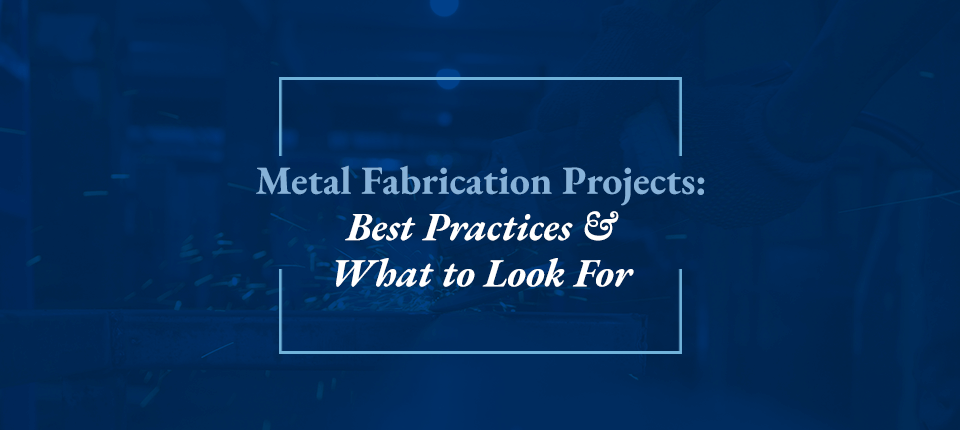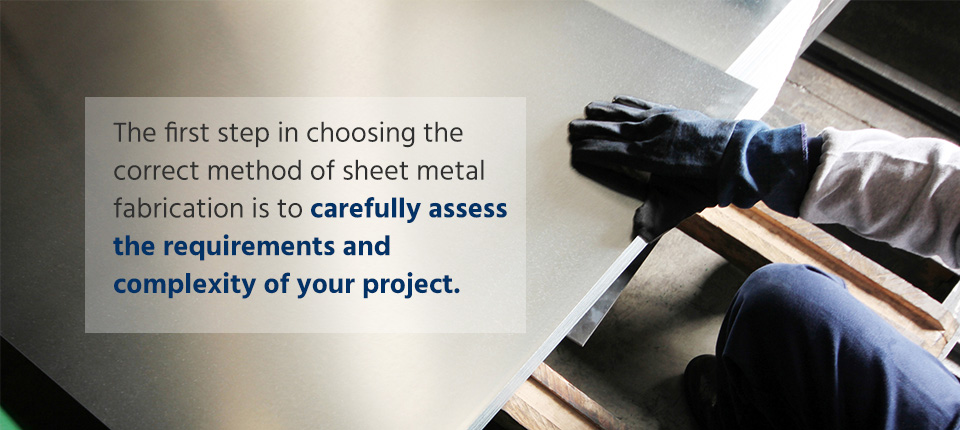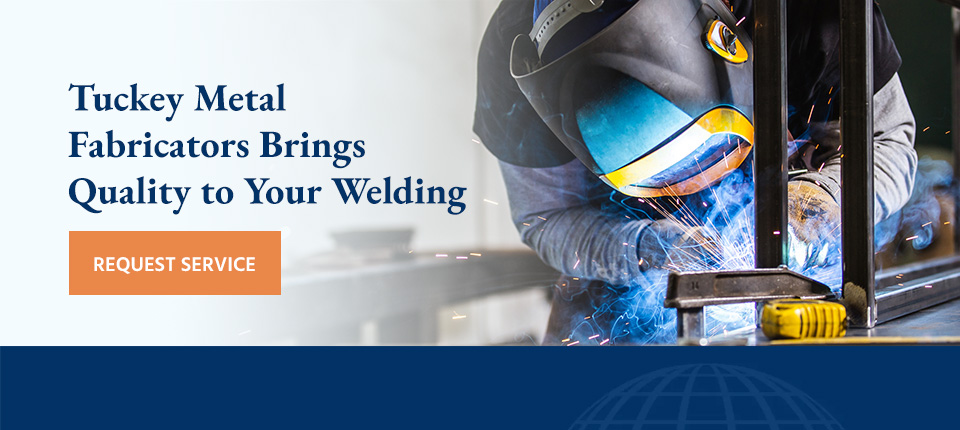Metal Fabrication Projects: Best Practices & What to Look For
July 12, 2023 | 10:37 pm
As you navigate the complexities of industrial operations, you encounter projects that require the expertise of skilled metal fabricators. From structural enhancements to specialized machinery components, guarding, and various other miscellaneous projects, quality welding and fabrication services are needed to achieve durable and reliable results.
The strength, integrity and precision of fabricated metal components directly impact your operation’s safety, efficiency and overall performance. However, achieving top-notch quality in metal fabrication comes with challenges.
Every step of the process requires careful consideration, from selecting the right materials to employing skilled welders and fabricators. By understanding the key factors contributing to high-quality welding and fabrication, you can make informed decisions, overcome challenges and avoid costly mistakes.
Where to Find Quality Metal Fabrication Services
The precision and durability of the components you use can significantly impact the quality of your final products. Here are a few places where you can purchase quality fabricated or raw component parts and materials:
- Established suppliers: These companies have built their reputations by consistently providing top-of-the-line products to the industry. By partnering with reputable suppliers, you gain access to an extensive catalog of parts backed by their expertise and commitment to quality.
- Online marketplaces: By searching the internet, you can explore standard metal fabrication parts from various suppliers worldwide. Online marketplaces offer convenience, competitive pricing and the ability to compare options easily, all from the comfort of your office or workshop.
- Local metal suppliers: For more immediate access to metal fabrication parts, local metal suppliers can be a valuable resource. These suppliers typically carry a range of stock items and can provide quick turnaround times for urgent projects. Building a relationship with a local supplier can also lead to benefits such as personalized service, direct communication and potential discounts for loyal customers.
- Trade shows and exhibitions: These events bring together manufacturers, suppliers and industry professionals, providing a platform to establish valuable connections, view product demonstrations and negotiate deals face-to-face.
What to Look for in Metal Fabrication and Welding Services
Every metal fabrication project is unique, requiring a diverse range of services to meet specific design and functional requirements.
When selecting a service provider, consider their ability to offer a comprehensive suite of services. This includes design assistance, prototyping, high welding quality, cutting, forming, finishing, millwrighting and assembly. A one-stop solution streamlines your project management and ensures consistency and seamless integration throughout the fabrication process.
- Expertise and experience: Look for companies with a proven track record, a desire to help you achieve all of your project goals and a team of highly skilled professionals with comprehensive knowledge of metalworking, welding techniques and fabrication processes.
- Advanced technology and equipment: Thanks to technological innovations, metal fabrication and welding techniques have advanced significantly in recent years. To ensure top-quality workmanship, seek service providers that leverage advanced software and cutting-edge equipment. Modern equipment allows for customization and adaptability to meet unique project requirements.
How to Tell Which Method of Sheet Metal Fabrication You Need
Sheet metal fabrication is a versatile process that involves shaping and manipulating metal sheets into various components and structures. Different projects and applications require specific fabrication methods to achieve the desired results.
The first step in choosing the correct method of sheet metal fabrication is to carefully assess the requirements and complexity of your project. Consider the design, dimensions, tolerances, material type and intended use of the fabricated part or structure.
Each fabrication method has its strengths and limitations. Be sure to consult with experienced fabricators to evaluate your project’s requirements thoroughly.
- CNC Plasma cutting: Plasma cutting utilizes a high-powered plasma arc to cut intricate shapes and contours from flat metal sheets. It’s ideal for projects that demand intricate designs, tight tolerances and high levels of accuracy. The plasma cutting process is well suited for a variety of different types of materials and material thicknesses, the process is well-suited for prototypes, custom-fabricated parts and intricate patterns.
- Punching and machining: This technique employs precision tooling and machines to punch and drill holes or slots into metals according to the design needed. This method efficiently creates patterns, holes and features into sheet metal and plate. Punching suits projects requiring high production volumes, repetitive patterns and standardized components. While machining, on the other hand, suits tight tolerance application on smaller batches of parts or fabrications.
- Bending and forming: Bending and forming methods involve manipulating metal sheets to achieve specific shapes, angles and contours. This method is commonly used for fabricating components such as brackets, enclosures, channels and boxes. Manual or CNC press brakes bend the metal to the desired angle or shape.
Metal Shop Fabrication Requirements: How to Know if Your Fabricator is Following Safety Guidelines
Metal shop fabrication involves various processes that require careful attention to safety and adherence to specific requirements and standards.
Ensure the metal shop has sufficient space to accommodate equipment, materials and personnel, allowing for safe movement and operation. Proper ventilation is necessary to minimize exposure to fumes, dust and other potentially hazardous substances. The area should also have good lighting to ensure visibility and prevent accidents.
Some other key safety elements include:
- Eye and face protection: Safety glasses or goggles with appropriate impact resistance should be worn to protect against metal particles, sparks and flying debris.
- Hand protection: Heavy-duty gloves, such as leather or cut-resistant gloves, should be worn (in most settings) to safeguard against cuts, burns and abrasions.
- Foot protection: Safety shoes are essential to protect against falling objects, sharp materials and potential crushing hazards.
- Hearing protection: Use earplugs or earmuffs to prevent hearing damage.
Quality Control Process in Metal Fabrication
A robust quality control process helps identify and rectify any deviations or defects throughout the fabrication stages, ultimately delivering quality metal fabrication and customer satisfaction.
Quality control in metal fabrication begins with a firm commitment to adherence to industry standards, specifications and customer requirements. This includes complying with relevant codes, regulations and certifications specific to the fabrication process and the intended application of the fabricated parts.
Documentation and Inspection Procedures
Create quality plans outlining each project’s fabrication process, inspection points and quality requirements. These plans serve as a roadmap to ensure consistency and accountability throughout the process.
Perform inspections at predetermined checkpoints during fabrication to verify that each stage meets the defined quality criteria. This helps identify any potential issues early on and enables timely corrective actions. Conduct a comprehensive final inspection before the metal fabrications are delivered or installed.
Tuckey Metal Fabricators Brings Quality to Your Welding
At Tuckey Metal Fabricators, Inc., we take pride in our commitment to excellence. Our state-of-the-art shop has a high-definition automated plasma cutting system, allowing us to cut materials with remarkable precision and tight tolerances. With modern software tools, we can duplicate scanned designs quickly and accurately. This advanced technology enables us to meet the most demanding fabrication requirements.
We also understand the importance of on-site capabilities. That’s why we maintain a fleet of field trucks operated by capable and dedicated millwrights. Whether it’s installations, repairs or maintenance, our skilled team is ready to perform quality work at any place of business. We prioritize prompt and reliable service, ensuring your projects stay on track and meet the highest standards.
When it comes to custom welding and fabrication, Tuckey Metal Fabricators, Inc. is the trusted partner you can rely on. Our extensive expertise, innovative tools and commitment to excellence set us apart in the industry. By choosing Tuckey as your fabrication partner, you can experience exceptional quality, professionalism and a dedication to precision that ensures the successful completion of any project.
Choose Tuckey Metal Fabricators, Inc. and discover the exceptional craftsmanship and customer service that have made us a leader in the industry.
All material Copyrighted (c) by the Tuckey Companies, 2025.




